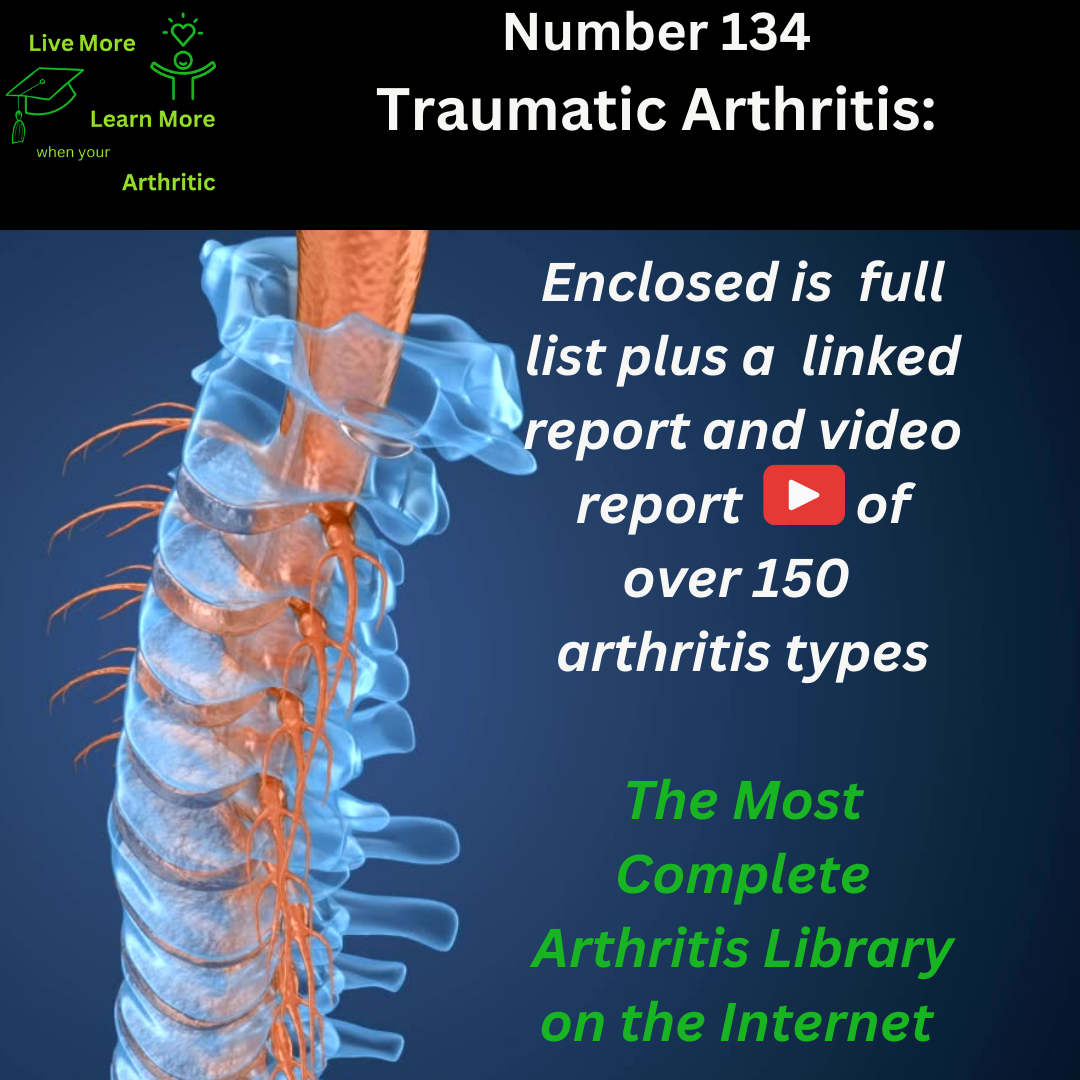
Traumatic Arthritis: Number 134 of around 150 types of Arthritis
Understanding Traumatic Arthritis
Traumatic arthritis is a condition that develops in joints following physical injury or trauma. This type of arthritis can affect various parts of the body, with some joints more commonly affected than others. Let’s delve into the details of traumatic arthritis, including its symptoms, causes, complications, and strategies for achieving a higher quality of life.
 Most Affected Parts of the Body
Most Affected Parts of the Body
Traumatic arthritis can affect any joint in the body, but the most commonly affected areas include the knees, hips, shoulders, and ankles. These joints are more prone to trauma due to their involvement in weight-bearing and mobility.
Description of the Disease
Traumatic arthritis refers to arthritis that develops as a result of joint injury or trauma, such as fractures, dislocations, or severe sprains. The injury disrupts the normal structure of the joint, leading to inflammation, cartilage damage, and eventual joint degeneration.
Causes and Triggers
The primary cause of traumatic arthritis is physical trauma to the joint, which may occur due to sports injuries, automobile accidents, falls, or repetitive stress. The trauma damages the joint’s cartilage, causing it to wear down over time and leading to arthritis symptoms.
Symptoms and Limited Range of Motion
Symptoms of traumatic arthritis include:
- Joint pain, swelling, and stiffness
- Decreased range of motion and flexibility
- Crepitus (cracking or popping sensation) in the joint
- Difficulty bearing weight on the affected joint
Common Ages of Onset and Risk Factors
Traumatic arthritis can occur at any age but is more common in individuals who have experienced joint injuries or trauma, typically during young adulthood or middle age. Men are more commonly affected due to higher rates of physical activity and sports-related injuries.
Complications and Prognosis
Complications of traumatic arthritis may include:
- Chronic pain and disability
- Joint deformity and instability
- Increased risk of developing osteoarthritis or post-traumatic arthritis
- Limited mobility and reduced quality of life
Is Traumatic Arthritis Autoimmune?
Traumatic arthritis is not considered an autoimmune form of arthritis. It develops as a result of physical injury rather than an immune system dysfunction.
Achieving a Higher Quality of Life
A proactive approach to managing traumatic arthritis includes:
- Physical therapy to improve joint strength and flexibility
- Weight management to reduce stress on affected joints
- Low-impact exercises such as swimming or cycling to maintain joint mobility
- Use of assistive devices and adaptive equipment to reduce joint strain
Complications of traumatic arthritis may vary depending on the severity of the joint injury and individual factors. Common complications include chronic pain, joint instability, and progressive joint degeneration leading to disability.
In summary, traumatic arthritis is a form of arthritis that develops following joint injury or trauma. While it can have significant impacts on mobility and quality of life, proactive management strategies such as physical therapy, exercise, and lifestyle modifications can help individuals achieve a higher quality of life and minimize the risk of complications associated with this condition. Regular follow-up with healthcare providers is essential for effective symptom management and optimal recovery.


